In the world of home design and accessibility, roll-in showers have carved a niche for themselves. These showers, characterized by their barrier-free entrances that allow for easy, seamless access, are becoming increasingly popular among homeowners. They offer a unique blend of functionality, safety, and style that is hard to match. This article delves into the specifics of roll-in showers, exploring their design, benefits, drawbacks, and the reasons behind their growing popularity. Whether you’re considering a bathroom remodel or simply curious about this modern shower design, read on to discover everything you need to know about roll-in showers.

What is a Roll-In Shower?
A roll-in shower is a type of shower that is designed for easy access, particularly for individuals who use wheelchairs or other mobility aids. Unlike traditional showers that have a curb or lip at the entrance, roll-in showers have a flat or slightly sloping entrance. This design allows a person to “roll in” to the shower without having to step over a barrier, hence the name. There are different types of roll-in showers, including barrier-free showers, wheelchair-accessible showers, and ADA-compliant showers. Each type has specific features designed to meet different accessibility needs.

Why Implement Roll-In Showers?
There are several reasons why one might choose to implement a roll-in shower. The primary reason is accessibility. For individuals with mobility issues, a roll-in shower can make bathing safer and more comfortable. The barrier-free design allows for easy entry and exit, reducing the risk of slips and falls. Another reason is the ease of use. Roll-in showers often come with features like hand-held shower heads and built-in benches, making the showering process more manageable.
Finally, one of the most significant benefits of roll-in showers is the independence they can promote. For individuals who rely on assistance for bathing, a roll-in shower can be a game-changer. The barrier-free design and user-friendly features mean that individuals with mobility issues can often bathe independently, without the need for a caregiver’s help. This can greatly enhance their sense of self-reliance and dignity.
The independence offered by roll-in showers extends beyond the act of bathing itself. The ability to perform personal care tasks independently can have a profound impact on an individual’s overall quality of life. It can contribute to improved self-esteem, increased confidence, and a greater sense of control over one’s daily routines.
Moreover, for caregivers, roll-in showers can provide a much-needed respite. Knowing that their loved one can safely and comfortably bathe independently can reduce stress and free up time for other tasks.
Advantages of Roll-In Showers
Increased safety
The foremost advantage of roll-in showers is the increased safety they offer. Traditional showers often require users to step over a high curb or threshold, which can pose a risk of slips and falls, especially for individuals with mobility issues. Roll-in showers, on the other hand, have a flat or slightly sloping entrance, eliminating this risk and making them significantly safer to use.
In addition to the barrier-free design, many roll-in showers are equipped with non-slip flooring. This feature provides extra traction, further reducing the risk of accidents.
Another safety feature commonly found in roll-in showers is grab bars. These sturdy bars provide something for users to hold onto while entering, exiting, or moving around in the shower, offering additional stability and support.
Easier accessibility
Enhanced accessibility is another significant advantage of roll-in showers. The barrier-free design allows individuals using wheelchairs, walkers, or other mobility aids to enter and exit the shower with ease. There’s no need to navigate a step or lip at the entrance, which can be a significant obstacle for many people.
Many roll-in showers also come equipped with adjustable shower heads. These can be lowered or raised to the appropriate height, making them accessible to individuals whether they’re standing, seated, or in a wheelchair.
Another feature that enhances accessibility in many roll-in showers is the inclusion of easy-to-reach controls and storage. Shower controls, soap dishes, and shelves are often installed at a height that can be easily reached from a seated position, making the shower more user-friendly and efficient.
Some roll-in showers also include clear floor space inside the shower. This space allows users to maneuver a wheelchair or use other mobility aids within the shower, further enhancing accessibility.
In essence, roll-in showers are designed with accessibility as a priority, making them an excellent choice for individuals with mobility issues, the elderly, or anyone who values an easy-to-use showering experience.
Visual Appeal
The aesthetic appeal of roll-in showers is another notable advantage. Far from being purely functional, roll-in showers are designed with style in mind. They offer a sleek, modern look that can enhance the overall aesthetic of your bathroom.
Roll-in showers come in a variety of styles and finishes, allowing homeowners to choose a design that matches their personal taste and the decor of their bathroom. From minimalist designs with clear glass panels to more elaborate setups with decorative tiles, there’s a roll-in shower to suit every style.
The open design of roll-in showers also contributes to their visual appeal. Without a curb or door to obstruct the view, roll-in showers can make the bathroom appear larger and more spacious. This can be particularly beneficial in smaller bathrooms where space is at a premium. Having an appealing looking roll-in shower can further increase the property value of your home. As more people recognize the benefits of accessible design, homes with these features can attract a broader range of potential buyers.
Disadvantages of Roll-In Showers
High installation costs
Despite their many advantages, roll-in showers also have some drawbacks. The most notable is the high installation cost. Converting a traditional shower into a roll-in shower can be expensive, especially if it involves significant remodeling.
In addition to the cost of the shower itself, there may be other associated costs. For instance, if the existing bathroom layout does not accommodate a roll-in shower, structural changes may be necessary. This could involve moving walls, rerouting plumbing, or adjusting electrical wiring, all of which can add to the overall cost.
Moreover, roll-in showers require a specific type of drainage system to prevent water from spilling out into the rest of the bathroom. If your existing bathroom does not have this type of drainage, additional plumbing work may be required, further increasing the cost.
Spacing requirements
Another disadvantage is that roll-in showers typically require more space than traditional showers. This can be a challenge in smaller bathrooms where space is at a premium. Additionally, converting a shower into a roll-in shower or relocating the piping and plumbing to accommodate the space may necessitate additional demolition or construction work for homeowners considering this modification.
Water Spillage
Finally, another potential disadvantage of roll-in showers is the risk of water spillage. Because roll-in showers are barrier-free, it’s possible for water to escape the shower area more easily than it would in a traditional shower with a curb or door to contain the water.
The design of the shower floor is crucial in managing water flow and preventing spillage. Roll-in showers typically have a slightly sloping floor to direct water towards the drain. However, if the slope is not correctly designed or installed, it can lead to water pooling in certain areas or spilling out of the shower.
Cost of Roll-In Showers
The cost of installing a roll-in shower can vary widely, depending on factors such as the size of the shower, the materials used, and the complexity of the installation process. According to a report by Forbes Home, the typical cost for a roll-in shower installation averages at approximately $6,641. However, this cost can fluctuate significantly, with the higher end reaching up to $10,168 and the lower end dipping to around $3,121.
Homeowners have two primary options when considering a roll-in shower. The first is to purchase a prefabricated unit, which comes pre-built and ready for installation. These units typically fall within the price range of $3,000 to $9,000.
The second option is to opt for a custom-built roll-in shower. While this option allows for greater flexibility in design and materials, it also comes with a higher price tag. Custom roll-in showers can cost upwards of $11,000, depending on the specifics of the build.
In essence, the cost of a roll-in shower can vary widely based on whether you choose a prefabricated or custom-built model, as well as the specific features and materials you select.
Conclusion
Roll-in showers offer a blend of safety, accessibility, and style that makes them a valuable addition to any home. While they may require a significant upfront investment, the benefits they provide in terms of enhanced safety and independence for individuals with mobility issues make them a worthwhile consideration. As with any home improvement project, it’s important to consider your specific needs and circumstances, and to consult with a professional to ensure that the project is carried out correctly. Whether you’re remodeling your bathroom for accessibility, convenience, or simply to update its look, a roll-in shower is an option worth considering. If you’re ready to explore the possibilities for your bathroom, visit our bathroom remodeling page to get a personalized quote for your project. Let’s turn your dream bathroom into a reality.
FAQ
What is the difference between a roll-in shower and a walk-in shower?
A roll-in shower has a flat or slightly sloping entrance that allows for easy access, particularly for individuals who use wheelchairs or other mobility aids. A walk-in shower, on the other hand, typically has a small step or curb at the entrance.
Are roll-in showers safe?
Yes, roll-in showers are designed with safety in mind. They eliminate the need to step over a high curb, reducing the risk of slips and falls. Many also come with safety features like grab bars and non-slip flooring.
Can I install a roll-in shower in a small bathroom?
Yes, roll-in showers can be installed in bathrooms of all sizes. However, they typically require more space than traditional showers, so it’s important to consider the size of your bathroom when planning for a roll-in shower.




